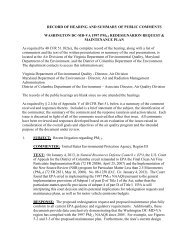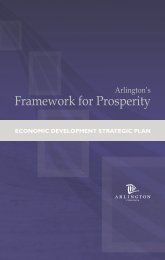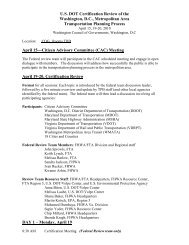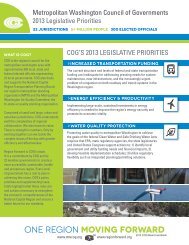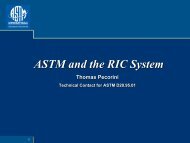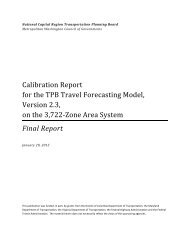PTI Local Government Energy Assurance Guidelines - Metropolitan ...
PTI Local Government Energy Assurance Guidelines - Metropolitan ...
PTI Local Government Energy Assurance Guidelines - Metropolitan ...
You also want an ePaper? Increase the reach of your titles
YUMPU automatically turns print PDFs into web optimized ePapers that Google loves.
■ ■ Length of time before the occurrence of serious impacts: Critical facilities that might experience effects<br />
from a supply disruption almost immediately may warrant rapid response.<br />
■ ■ Nature of potential impacts: Critical facilities that involve potential public safety impacts may warrant a<br />
more rapid response than those with only potential inconvenience impacts.<br />
■ ■ Number and groups of people potentially affected: Critical facilities where a large number of people would<br />
be affected may warrant a more rapid response than those where only a few would be affected. Also, critical<br />
facilities that serve primarily seniors or children might require more rapid response than those that serve<br />
primarily able-bodied adults.<br />
Another important issue concerns the scale of the energy supply disruption. It is imperative to know the geographic<br />
reach of any energy emergency. For example, if an electricity brownout is local only, it may relate only to the<br />
distribution system, or even more specifically, to just one asset or building. If the brownout is regional or larger<br />
in scope, it may involve electricity transmission and/or generation. In any case, the energy provider is going to<br />
prioritize its response, in part, based on the scale and scope of the emergency. <strong>Local</strong> governments may be left to<br />
resolve their own energy supply issues through backup generators, conservation, efficiency, or other energy resource<br />
allocation methods. This in fact is what drives the need for a locally responsive EAP.<br />
Most States prioritize restoration of energy supplies to key assets through utility outage and restoration rules or<br />
through a critical user list which can inform their related discussions with energy providers. 39 States may take a<br />
number of measures under emergency conditions to help mitigate the effects of supply disruptions on key assets and<br />
other infrastructure, as governed by the legal authorities granted them. Such measures could include:<br />
■■<br />
■■<br />
■■<br />
■■<br />
■■<br />
■■<br />
■■<br />
■■<br />
■■<br />
Imposing restrictions on the hours during which commercial, industrial, public, and school buildings may be<br />
open<br />
Imposing restrictions on lighting levels in commercial, industrial, public, and school buildings<br />
Imposing restrictions on interior temperature in commercial, industrial, public, and school buildings<br />
Imposing restrictions on the use of display and decorative lighting<br />
Requiring mandatory interruption of selected customers<br />
Curtailing sales of electricity outside the utility service areas<br />
Granting waivers to utilities that have generators operating at less than their technical limits due to<br />
environmental or other restrictions<br />
Starting up State-owned backup generators to provide additional capacity<br />
Directing utilities to use pre-determined customer restoration priority lists to the degree the physical<br />
distribution system permits<br />
Other State actions can include coordinating with the U.S. EPA or the Federal Motor Carrier Safety Administration to<br />
waive certain motor fuel or driver-hour requirements as a means of alleviating fuel supply shortages. (See Appendix<br />
E, and also NASEO State <strong>Energy</strong> <strong>Assurance</strong> <strong>Guidelines</strong> for additional information).<br />
39<br />
http://www.naseo.org/eaguidelines/State_<strong>Energy</strong>_<strong>Assurance</strong>_<strong>Guidelines</strong>_Version_3.1.pdf.<br />
<strong>Local</strong> <strong>Government</strong> <strong>Energy</strong> <strong>Assurance</strong> <strong>Guidelines</strong> – Version 2.0 | 61



